Getting Started
Foreword
Ant Design Pro is a production-ready solution for admin interfaces. Built on the design principles developed by Ant Design, this project introduces higher level components; we have developed templates, components, and a corresponding design kit to improve the user and development experience for admin interfaces.
Your help is welcomed and much appreciated. With your feedback we can make incremental progress towards elegant and well designed components. Please open an issue or submit a pull request!
With those objectives in mind, we have built the following templates and a scaffold based on React.js, which should help you prototyping production-ready admin interfaces.
- Dashboard
- Analysis
- Monitor
- Workspace
- Form
- Basic Form
- Step Form
- Advanced Form
- List
- Standard Table
- Standard List
- Card List
- Search List (Project/Applications/Article)
- Profile
- Simple Profile
- Advanced Profile
- Result
- Success
- Failed
- Exception
- 403
- 404
- 500
- Account
- Account Center
- Account Settings
- Graphic Editor
- Flow Editor
- Mind Editor
- Koni Editor
- User
- Login
- Register
- Register ResultAll of the above pages can be found in Pro's Blocks.
Recommended page code structure
In order to make the organisation of the project code more standardised and to make it easier for developers to locate the relevant page component code, we have defined a set of specifications which are currently only used as a recommended guide and are not mandatory.
src
├── components
└── pages
├── Welcome // routed components should not contain other routed components, so that routed components can be clearly distinguished from non-routed components based on this convention
| ├── components // For complex pages you can do your own deeper organisation, but it is recommended that you do not exceed three levels
| ├── Form.tsx
| ├── index.tsx // The code for the page components
| └── index.less // page styles
├── Order // No other routing components should be included under the routing component, based on this convention it's clear to distinguish between routing and non-routing components
| ├── index.tsx
| └── index.less
├── user // A single lowercase letter is recommended for group directories on a range of pages
| ├── components // a collection of components common to the group
| ├── login // the group's page Login
| ├── Register // page under group Register
| └── util.ts // There can be some common methods and so on, not recommended and not constrained, it depends on the business scenario to make your own organization
└── * // Other page component codeAll routing components (those that will be configured in the routing configuration) are recommended to be named with a big hump and leveled to the first level below pages (complex projects can add a group level and place pages under the group). It is not recommended to nest routing components inside routing components - it is not easy to tell if a component is a routing component and it is not easy to quickly locate a routing component from the global level.
We recommend splitting routing components into finer-grained components where possible. For components that may be used by multiple pages we recommend putting them in src/components, and for components that are dependent on a single page (blocks) we recommend maintaining them in the routing components folder nearby.
Users of Ant Design Pro
Hundreds of applications within Ant Financial and Alibaba Group are using Ant Design Pro. You are welcome to leave your information in Ant Design Pro Users if you or your organization is using it.
For Designers
If you are a product manager or designer, you can find the design kit here.
For Developers
We will walk you through the steps to get started.
Preparation
You will need yarn, node and git. The project is based on ES2015+, React, UmiJS, dva, g2 and antd. It would be helpful if you have pre-existing knowledge on those.
Installation
Create a new empty folder as project root. Execute command in the folder:
yarn create umi myAppor
npm create umi myAppChoose ant-design-pro:
Select the boilerplate type (Use arrow keys)
❯ ant-design-pro - Create project with an layout-only ant-design-pro boilerplate, use together with umi block.
app - Create project with a simple boilerplate, support typescript.
block - Create a umi block.
library - Create a library with umi.
plugin - Create a umi plugin.Ant Design Pro will be installed automatically.
Scaffolding
We have provided a scaffold which includes common routes for admins and demonstrates our component library. The project layout is as follows:
├── config # umi config, include routes and webpack etc.
├── mock # Local Mock Data
├── public
│ └── favicon.png # Favicon
├── src
│ ├── assets # Local static files
│ ├── components # Components
│ ├── e2e # Integrated Test Case
│ ├── layouts # Common Layouts
│ ├── models # Global dva Model
│ ├── pages # Sub-pages and templates
│ ├── services # Back-end Services
│ ├── utils # Utility
│ ├── locales # i18n resources
│ ├── global.less # Global Stylesheet
│ └── global.ts # Global JS
├── tests # Tests Configuration
├── README.md
└── package.jsonDevelopment
Install Dependencies
$ npm install$ npm start 
This will automatically open http://localhost:8000. If you see the following page then you have succeeded.

You're all set!
We have built-in mock data, hot module reloading, state management,i18n, global router, etc. You can continue exploring other documents for more details on those topics.
Next Steps
> Block Development Quickly build standard pages.
> Traditional development mode, fully custom development.
